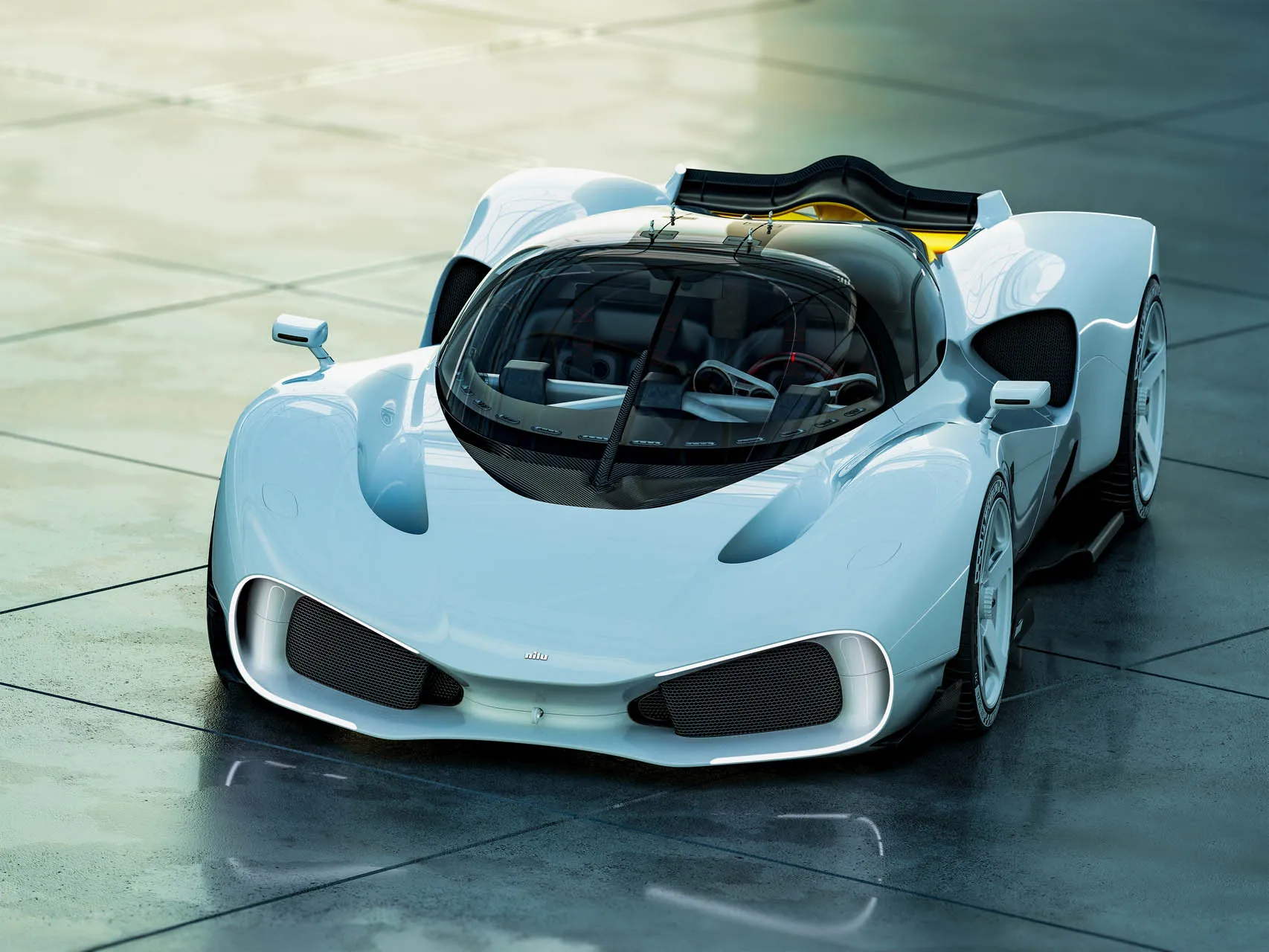- The Nilu is a V-12-powered track-only hypercar
- Only 15 build slots have been announced, for now, and pricing is TBD
- A street-legal variant is in the works and 54 examples will be built
The talented designer behind cars such as the Bugatti Chiron and Koenigsegg Gemera has revealed his own hypercar, the Nilu.
The man in question is Sasha Selipanov, who recently started the design consultancy Hardline27 based in Los Angeles, as well as his own hypercar brand Nilu27, which he co-founded with his wife Inna. The Nilu is just the first model from the brand.
Selipanov spent much of his career at the Volkswagen Group, where he was responsible for multiple designs, including not only the Bugatti Chiron but also the Lamborghini Huracán. He then headed to Genesis, briefly, where he was involved in designs for the Essentia and Mint concepts. He then became head of design at Koenigsegg, where he helped pen the Gemera and CC850 hypercars. Now it’s his own hypercars he’s designing.
The Nilu is raw, V-12-powered track car (a road car is also planned) that aims to deliver an unfiltered driving experience by skipping modern conveniences, while applying the Bauhaus philosophy of form following function for its design. The result resembles a classic Le Mans endurance racer designed for the modern era.
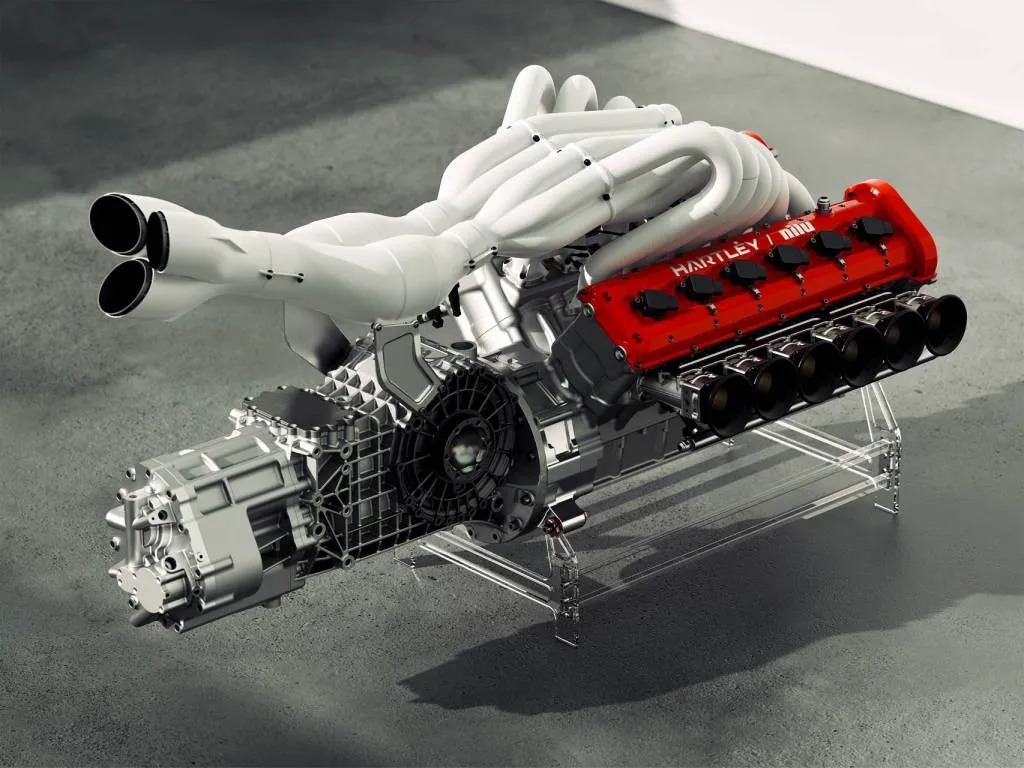
Nilu hypercar
Underneath the flowing body panels is a bespoke carbon-fiber monocoque passenger cell with aluminum-alloy tubular subframes front and rear. Selipanov said he chose to skip composite subframes in favor of the more skeletal tubular setup to improve access to key components of the powertrain, as well as to aid cooling.
The powertrain is a 6.5-liter V-12 developed by talented New Zealand engine builder Hartley Engines, and paired with a 7-speed manual transmission. Final specifications will be announced at a later date, but the powertrain is targeted to deliver more than 1,000 hp and should sound like an old-school Formula 1 engine. Selipano said he wants the Nilu to be the world’s most powerful naturally aspirated car devoid of electrification.
Thanks to the engine’s so-called Hot-V design, where the exhaust system sits on top between the cylinder banks, the engine is not only relatively compact, it also features 12-into-1 exhaust headers that Selipanov has chosen to leave fully exposed in the Nilu. He calls the feature the Snake Pit.
Access to the cabin is via gullwing doors, and inside sits two low-mounted sports seats and an H-pattern shifter with an exposed mechanism. There aren’t any digital screens in sight, apart from the digital rearview mirror. Elsewhere, the Nilu features traditional dials and billet-machined controls. Even the steering wheel is completely devoid of any controls, ensuring no distraction for the driver from the task of driving.
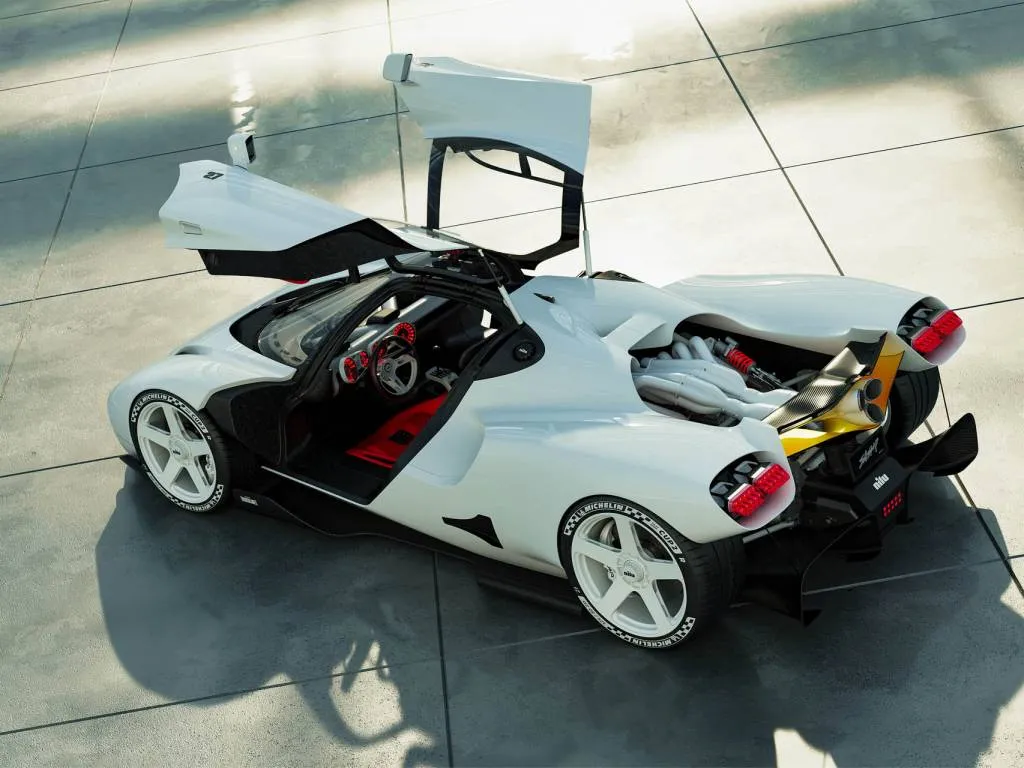
Nilu hypercar
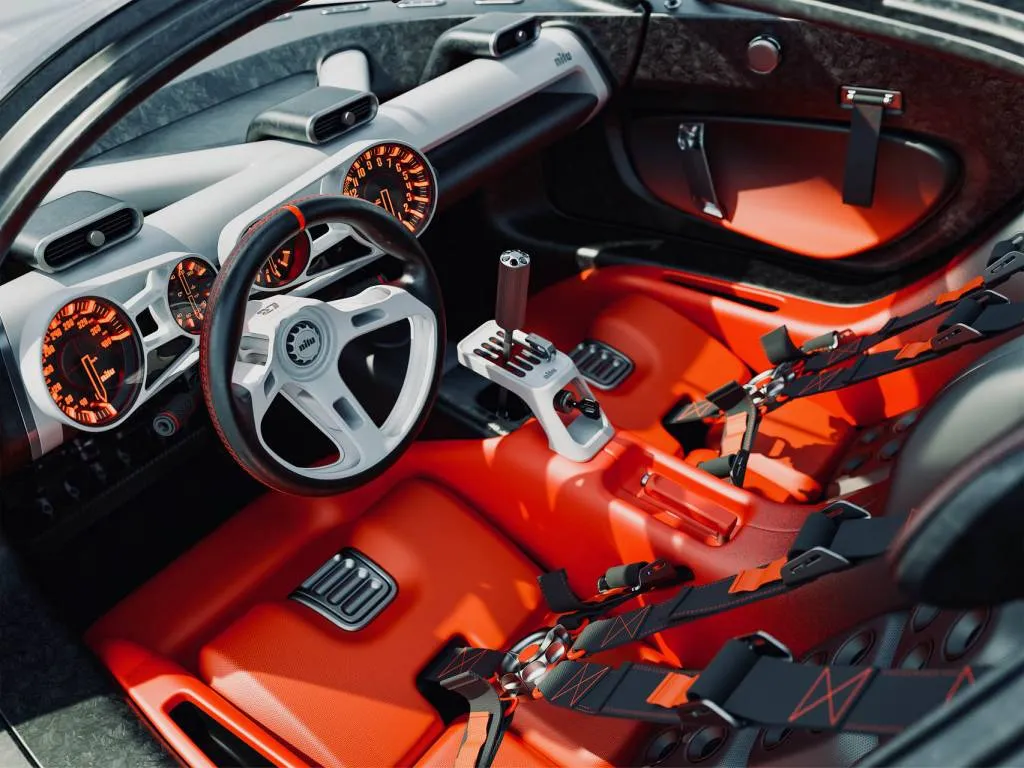
Nilu hypercar
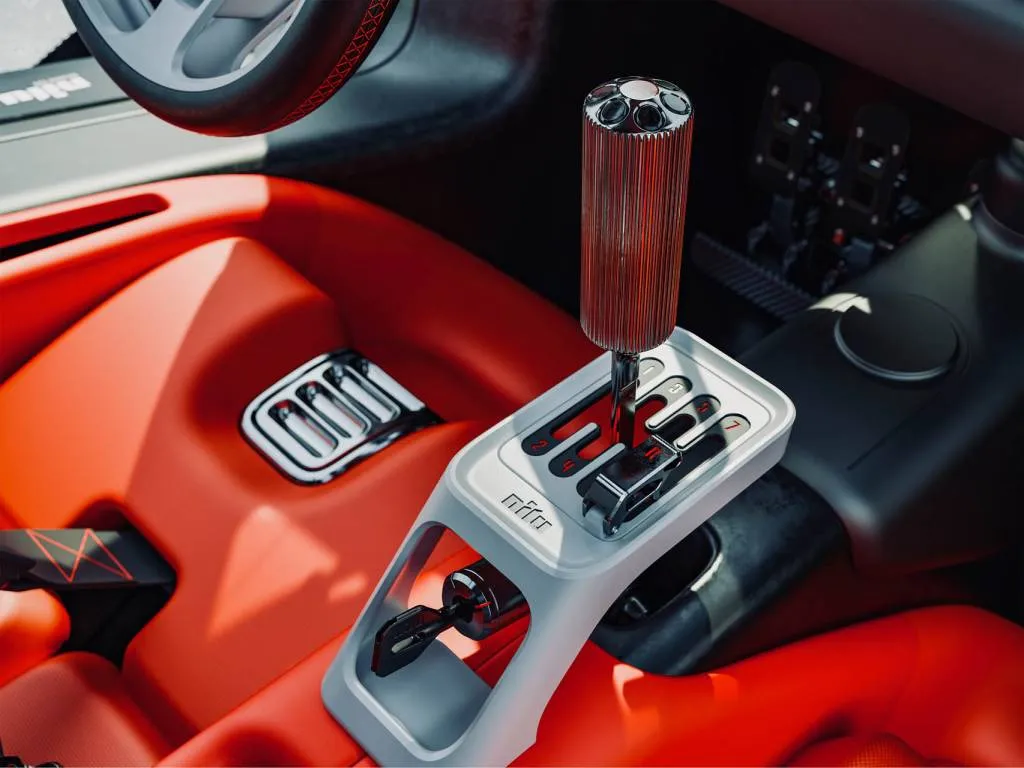
Nilu hypercar
The Nilu will be shown privately to prospective buyers at an event in Los Angeles on Thursday before a formal debut during next week’s 2024 Monterey Car Week. Nilu27 has confirmed car will be shown on Aug. 15 on the ramp at Pebble Beach before hitting the concept lawn on Aug. 18 at the Pebble Beach Concours d’Elegance.
Nilu27 plans to build just 15 examples, at least initially. The first cars will be built by California’s Aria Group, which presented its own hypercar design in 2017. Nilu27 eventually plans to establish its own production facility at an undisclosed location overseas.
A future road-going version is also in the works, to be limited to 54 units. Four of those cars will have unique designs that the company said will further evolve the design language.
Pricing hasn’t been announced for any of the hypercars.
